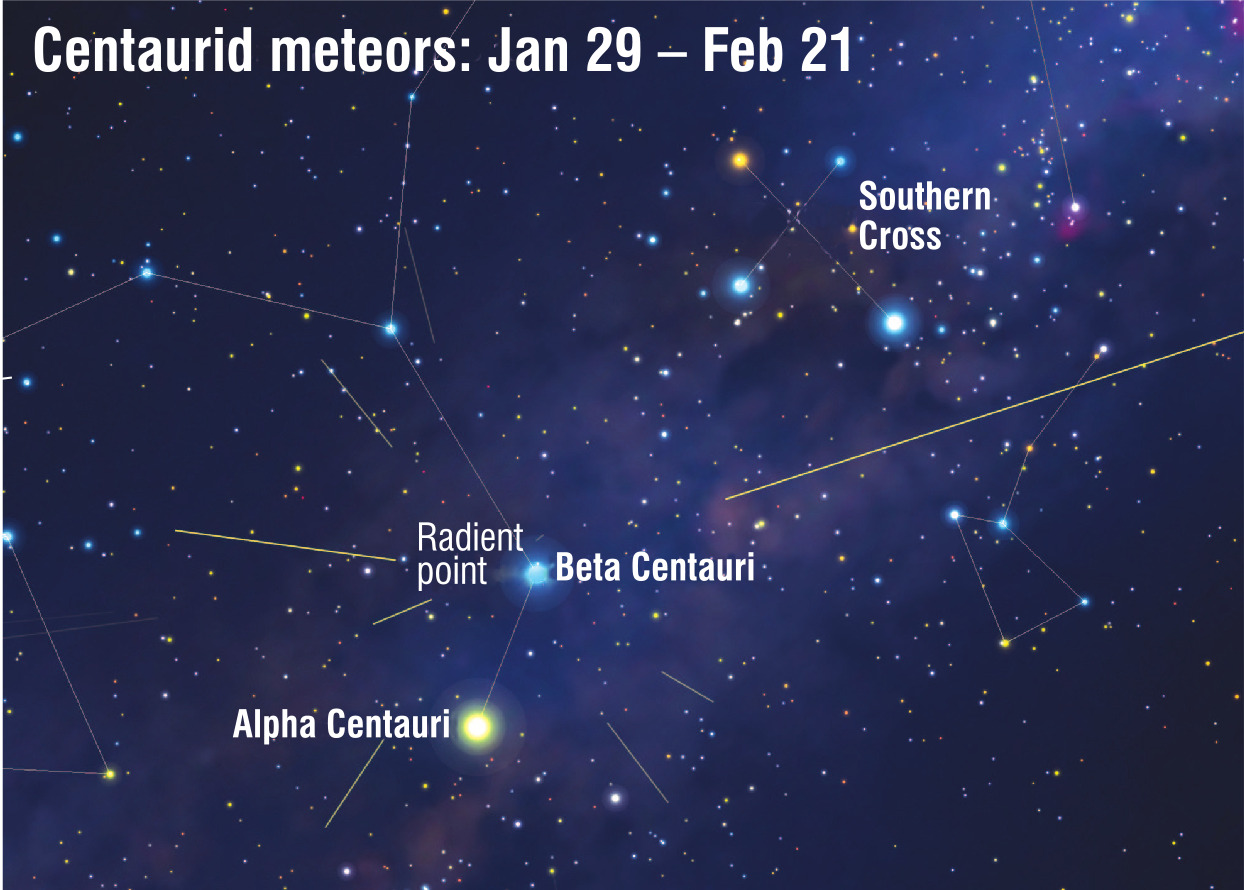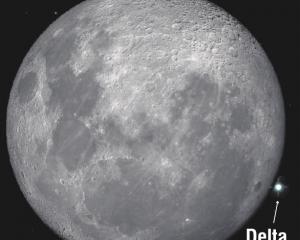

This particular meteor shower is called the Alpha Centaurids. It is active from January 29 to February 21, with the peak occurring, as noted previously, on February 8.
Its name arises from the fact that the meteors radiate from part of the sky close to Alpha Centauri, which is the brighter of the two ‘‘pointer’’ stars used by some to locate the Southern Cross.
Remember that the best place to look is not directly at the radiant point. Instead, look roughly 30-40 degrees away from it to maximise your chance of a successful sighting.
Centaurid shooting stars' relative paucity means that most astronomers describe this as a minor shower when compared to some that are richer in meteors and better known.
However, because Centaurus is my favourite constellation and is high in the sky after midnight, and since summer conditions can make for delightful observing conditions, I have a rather soft spot for this particular meteor shower. Hence, I always try to seek time to view some Centaurid meteors when given a chance.
This year conditions appear good. The moon reaches last quarter next Friday. On February 8, our closest neighbour in space will be a slim waning crescent, so its light won't interfere with meteor spotting.
We get to see an increased number of meteors at this time of year because Earth is crossing the orbit of an unknown comet. As it orbited the sun, the comet deposited a trail of dusty debris behind it, which burns up high overhead when it enters Earth's atmosphere.












